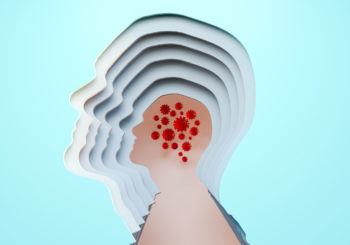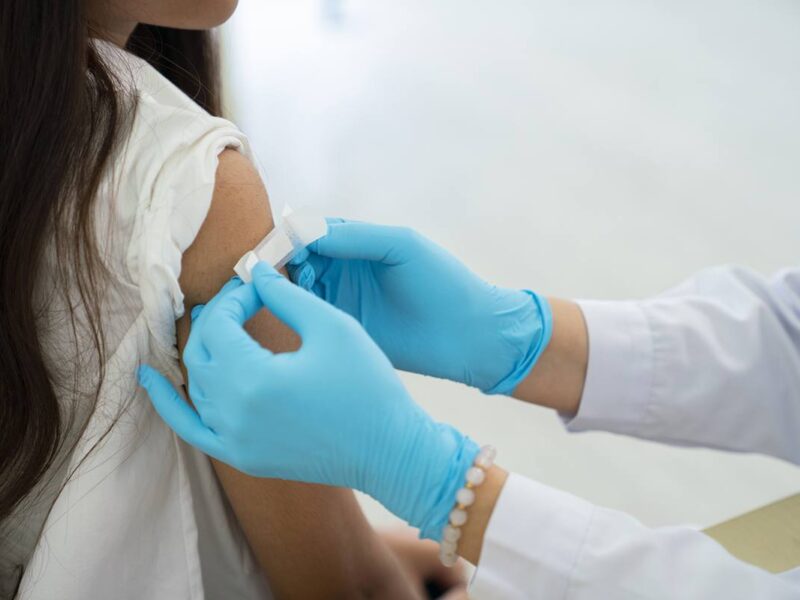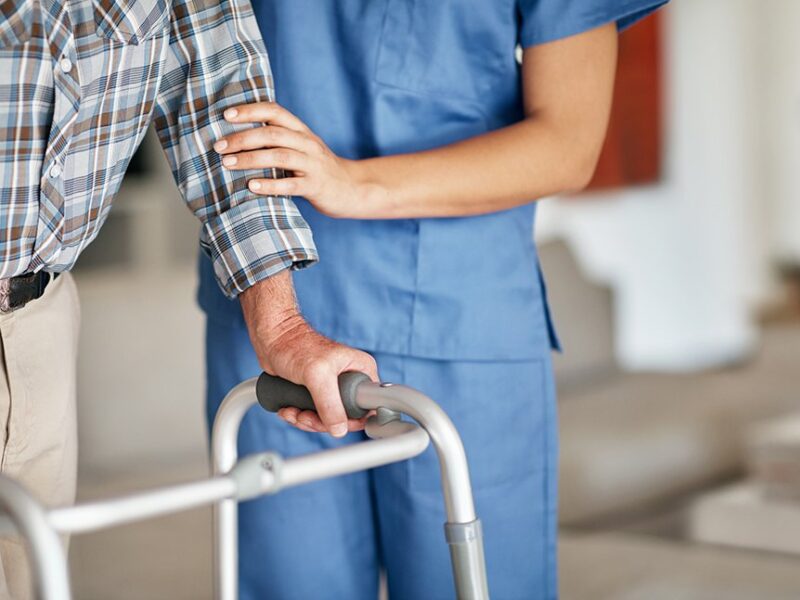BA.5: What To Know About The Omicron Subvariant Driving Up US COVID Cases

Recent numbers from the Centers for Disease Control and Prevention show the BA.5 strain of Omicron is now the dominant form of coronavirus in the U.S., driving up national case numbers and presenting an elevated risk of reinfection for those who have already had COVID-19.
For more information on this subvariant and the steps people can take to stop its spread, Texas A&M Today spoke with two experts who have been monitoring the pandemic since its beginning: Rebecca Fischer is an assistant professor and infectious disease epidemiologist in the Department of Epidemiology and Biostatistics at the Texas A&M School of Public Health, and Ben Neuman is a professor in the Department of Biology and chief virologist at the Texas A&M Global Health Research Complex.
What makes BA.5 stand out from previous variants and subvariants?
Fischer: We may remember when we recognized the emergence of Omicron and it became characterized as the most transmissible variant, quickly responsible for most of the COVID cases we were seeing. Well, BA.5 has been characterized as the most transmissible variant yet. It is also working around our immunity better than past variants, which accounts for infections that are being reported in some individuals who have been vaccinated or recovered from prior infections.
Neuman: Every new variant is still pretty close to the original at this stage – no more than 0.2% difference at the genetic level. But many of the changes in new variants are clustered around the spots your immune system recognizes. So, we are seeing a considerable amount of reinfection, even with people who caught Omicron this past January.
What steps should people take to protect themselves at this point?
Fischer: It’s time to exercise caution out there. Moving into the future, we will likely see times where we can relax and drop our masks and other times when we will want to be extra vigilant. This wave calls for the latter.
Remember that vaccinations and boosters are still needed even if you have had an infection. It does appear that vaccinated individuals continue to largely escape severe disease, hospitalization and death.
While there are new booster formularies in production that are more specific for Omicron, waiting is not advisable. Getting any missing boosters now is key to getting through this wave unscathed. We also heard this week that the administration has asked for booster eligibility to be broadened. That could happen quickly in response to this wave and could make the second dose booster available to all adults – a strong recommendation by top health experts.
Neuman: It’s a good time to dust off that mask and get suited up before any sort of indoor activity with other people. The new variants like BA.5, BA.2.12 and BA.2.75 have enough changes that immunity decays quickly – if it has been more than three months since your last booster or infection, you are probably under-vaccinated. Each additional dose does give a lot more protection against the new variants than the last.
I say all this as a person who is just now, hopefully, getting over a two-week bout of COVID. I let down my guard for a few minutes, and it came back to hurt my entire family – if I could take it back, I would. Be careful out there.
How serious is the threat posed by this new subvariant?
Fischer: This newest variant seems to have fewer of those mild or asymptomatic infections we have gotten used to, meaning that if you do catch it, you are likely to feel sick and miss out on school, work and other activities.
Data on long COVID following BA.5 is not going to be available for some time, but it is unlikely to cause any less severe long-term effects than past variants, and certainly getting a second infection could increase the risk of long-term or later post-COVID health consequences.
Neuman: A second reason to get vaccinated is to avoid the brain damage that often comes with COVID. During a natural infection, the immune response around your brain will starve cells of oxygen, and the effect is that you will lose a lot of grey matter – something like a stroke. Unlike a stroke, where usually only one part of the brain is affected, COVID seems to affect the entire brain, so you don’t necessarily lose one thing, like the ability to control nerves on one side of the face, you lose a bit from everywhere. COVID-associated brain damage only happens with infection, not with the vaccine, and having a strong set of white blood cells trained by the vaccine is likely to be helpful in preventing brain damage.
What challenges are health officials facing when it comes to monitoring and preventing the spread of BA.5?
Fischer: For public health and leadership, this may highlight a need to adapt to our dynamic landscape – not only the changing nature of the virus, but our new ability as individuals to manage our own testing, isolation and quarantine. Yet, the challenge remains to predict and prevent large outbreaks and to protect community health on a broad scale. COVID remains a public health emergency, and one that requires an evolving and adaptive response.
Neuman: The at-home COVID tests are a mixed blessing. It’s great to be able to check whether what seems like a cold or a bout of allergies might be something more, without going to see a doctor. At the same time, home tests are not reported and can’t be reported directly in national statistics, so it is a nightmare for public health workers to try to track where the virus is headed. Often, we end up trying to catch up to the virus based on looking at people who got sick enough to enter the hospital, but that leaves us weeks to a month behind the situation.
Is there anything else people should keep in mind as we enter this latest phase of the pandemic?
Fischer: When co-workers, classmates, neighbors and friends start to report COVID cases with increasing frequency, this is a sign that case numbers are increasing and that transmission risk in our communities is growing, even if the cases are mild or the numbers don’t yet appear in the news. The closer these cases are to our own personal networks and families, the greater our own personal risk can be, and the more cautious we will want to be on a personal level.
Remember, even mild cases can transmit the virus, and the more virus is out there, the greater the opportunity for more and more variants to arise – including even more transmissible or more deadly variants. This is a huge motivation for avoiding infection, preventing passing the virus on to others, and keeping the numbers in the community as low as possible.
Neuman: We definitely need an updated vaccine, but I think this is still a winnable fight. Until then, masks work, and I’ll certainly be wearing mine.
Media contact: Luke Henkhaus, luke.henkhaus@tamu.edu





